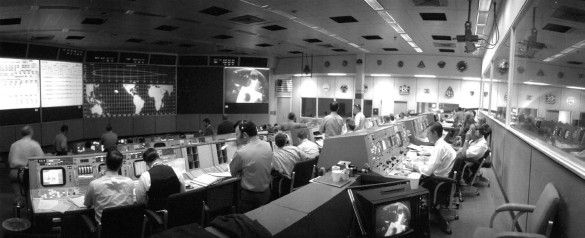MTA Long Range Planning: Part 1 Of 2

THE COMMUTE: Most of what the MTA does such as day-to-day operations does not make the news. Keeping the system running each day, as imperfect as it is, is a monumental task and the MTA does not receive enough credit for all the good that it does. In fact, other than MTA workers, few realize the complexity of what needs to be done just to maintain the system the way it is, not to mention improving it. Most take for granted all that goes on behind the scenes.
I often criticize the MTA. Last week I stated that upper management at the MTA does not care. That is not true. What I should have said is that the problems with signage and announcements, which I pointed out, tend to give the impression that they do not care. Perhaps they just don’t care enough. Many think that if you just throw more money at the system, most of the problems would just disappear. I never believed that and maybe that is why budgeting never interested me and I try to stay away from writing about it.
Day-to-day operations only make the news when there is an accident or something terrible happens to a passenger. The other topics we often read about are the fare or if a new service is started such as a new Select Bus Service (SBS) route. Since this is a mayoral election year, a few more topics have made the news such as should control of the subways and buses be returned to the city as mayoral control candidate Christine Quinn suggested? Or as mayoral candidate and former MTA Chairman Joe Lhota suggested, just returning MTA Bridges and Tunnels to city control.
I’m not going to get into either of those discussions today, other than to say the only reason to return control to the city of the Bridges and Tunnels would be to enable it to institute congestion pricing. I wrote several pieces about where the candidates stand on transit, here, here, and here, but have said little or nothing about candidates who entered the race late, like Lhota, Weiner, McDonald and Catsimatidis, so allow me to say a few words about Lhota now. I already criticized Lhota for not fulfilling his contract with the MTA and leaving after only a year to enter the mayoralty race.
One would think that, as a former MTA Chairman, Lhota would have a strong position on mass transit. So it was a little shocking to see that in his literature, the only qualification for mayor he mentions is that he is a former deputy mayor. No mention at all of his brief tenure at the MTA. Equally surprising is that in his list of priorities in his literature and on his website, he makes no mention at all of transportation.
A few weeks ago, I criticized the MTA for not doing any long range planning regarding the fares and tolls, stating that these cannot just be raised every two years forever, with no other strategy. I stated the MTA has an obligation to do long range planning. In July, when the MTA released its financial plan for 2014 to 2017, it received little publicity. The same month, the MTA also released Looking Ahead: A Context for the Next Twenty Year Needs Assessment. That received even less publicity. It is mainly a collection of graphs showing changing travel needs during the past 20, 30, or 40 years and an explanation of how those changes impact the MTA’s long range plans for the future.
Summary Of Changing Travel Needs
Here are the key findings:
- Subway and commuter rail usage is up 58 percent in the last 20 years but bus usage is “flattening;”
- Trips within the outer boroughs and non-work trips are growing while transit travel to the CBD is flattening;
- More trips are being made during non-rush hours where more capacity exists; and
- Auto usage is down locally and nationwide.
The changes regarding employment habits are consistent with other studies, as reported by Sheepshead Bites, which also stressed how employment centers are moving away from the Manhattan CBD.
How The MTA Is Reacting To Changing Needs
- Continue maintenance to prevent any backslide in reliability;
- Complete projects that address long-standing problems such completing full length Second Avenue Subway;
- Overcome subway capacity obstacles;
- Optimize subway and bus network by adding SBS service, adding additional subway transfer points and possible use of abandoned and un-utilized rights-of-way for new non-CBD transit;
- Optimize and expand rail (non-subway) network;
- Increase Real-Time Information Displays;
- “System-wide Electronic Fare and Toll Payment” whatever that means (Sounds like elimination of conductors on commuter rails);
- Accessible Phone/ Wi-Fi service;
- Evaluate Car/Bus Design Approaches;
- Expand Computer Based Train Control; and
- Strengthen and rebuild critical infrastructure to withstand future storms
Next week, part two will focus on why the MTA’s reaction to changing needs is so disappointing.
The Commute is a weekly feature highlighting news and information about the city’s mass transit system and transportation infrastructure. It is written by Allan Rosen, a Manhattan Beach resident and former Director of MTA / NYC Transit Bus Planning (1981).
Disclaimer: The above is an opinion column and may not represent the thoughts or position of Sheepshead Bites. Based upon their expertise in their respective fields, our columnists are responsible for fact-checking their own work, and their submissions are edited only for length, grammar and clarity. If you would like to submit an opinion piece or become a regularly featured contributor, please e-mail nberke [at] sheepsheadbites [dot] com.




